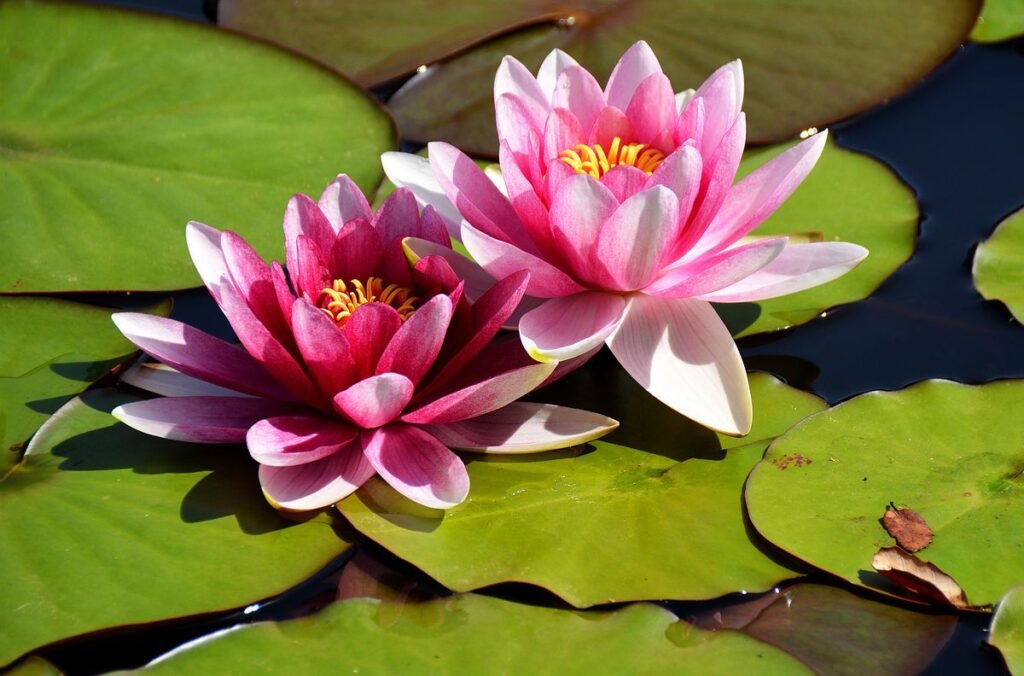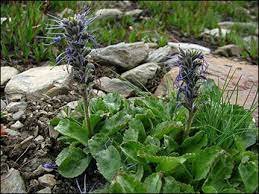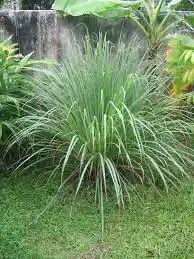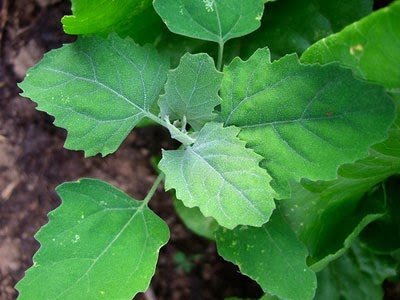Lotus Nutrition Requirements
Nutrition required by Lotus at each stage of its life cycle.
SOIL PREPARATION

Soil Preparation
Soil preparation is crucial for the successful cultivation of lotus plants. Here's a guide to the soil preparation method and nutrition requirements at the soil preparation stage for lotus:
**Soil Preparation Method:**
1. **Selecting a Site:**
- Choose a site that receives full sun for at least 6-8 hours a day.
- Ensure the site has a water depth of 1-2 feet for optimal lotus growth.
2. **Preparing the Pond or Container:**
- If growing lotus in a pond, dig a hole or excavate a container to a depth of at least 2 feet.
- Ensure the pond or container is lined with a waterproof material to prevent water leakage.
3. **Soil Selection:**
- Use heavy clay soil or loam soil with a high clay content.
- Avoid sandy or loose soils, as they may not hold water and nutrients well.
4. **Soil Amendment:**
- Incorporate organic matter such as compost or well-rotted manure into the soil to improve its fertility and water retention.
- Mix in a slow-release fertilizer to provide essential nutrients for lotus growth.
5. **Leveling and Smoothing:**
- Level the soil surface evenly to ensure uniform water depth in the pond or container.
- Remove any rocks, debris, or weeds from the soil surface.
6. **Filling the Pond or Container:**
- Fill the pond or container with water to the desired depth, covering the prepared soil surface.
**Nutrition Requirements:**
Lotus plants have specific nutrition requirements for healthy growth.
Here are the essential nutrients and their functions:
1. **Nitrogen (N):**
- Essential for vegetative growth and overall plant development.
- Promotes leaf and stem growth.
2. **Phosphorus (P):**
- Important for root development and flower formation.
- Promotes strong root growth and early flowering.
3. **Potassium (K):**
- Helps regulate water uptake and nutrient transport within the plant.
- Improves plant vigor and disease resistance.
4. **Microelements:**
- Iron (Fe), manganese (Mn), zinc (Zn), copper (Cu), and boron (B) are essential micronutrients required in small amounts.
- Ensure the soil pH is within the optimal range (slightly acidic to neutral) to facilitate nutrient availability to lotus plants.
**Fertilization:**
- Apply a balanced fertilizer with a formulation such as 10-10-10 or 5-5-5, following package instructions for application rates.
- Fertilize lotus plants sparingly to prevent nutrient runoff and water pollution.
- Monitor plant growth and adjust fertilizer application as needed based on plant response.
By following these soil preparation methods and providing the necessary nutrition requirements, you can create an ideal growing environment for lotus plants, ensuring healthy growth and abundant flowering.
Early Growth (Germination to Establishment)

Early Growth
During the early growth stage of lotus plants, which includes germination to establishment, the nutritional requirements primarily focus on supporting robust root development and initial vegetative growth.
Here are the key nutrition requirements for lotus plants during this stage:
1. **Nitrogen (N):**
- Nitrogen is crucial for promoting vigorous vegetative growth, including the development of leaves and stems.
- It supports the formation of chlorophyll, essential for photosynthesis and energy production.
- Apply nitrogen-rich fertilizers or organic amendments to promote healthy foliage development.
2. **Phosphorus (P):**
- Phosphorus is essential for promoting strong root development and early establishment.
- It aids in energy transfer and the formation of nucleic acids and phospholipids, crucial for cellular processes.
- Ensure the soil or growing medium contains adequate phosphorus for healthy root growth.
3. **Potassium (K):**
- Potassium plays a vital role in regulating water uptake, nutrient transport, and overall plant metabolism.
- It enhances plant vigor and helps plants tolerate environmental stresses.
- Incorporate potassium-rich fertilizers to support early growth and establishment.
4. **Microelements:**
- Iron (Fe), manganese (Mn), zinc (Zn), copper (Cu), boron (B), and molybdenum (Mo) are essential micronutrients required in small amounts during early growth.
- These micronutrients facilitate various metabolic processes and enzyme activities essential for plant development.
- Ensure the soil or growing medium contains a balanced supply of micronutrients through proper soil preparation or supplementation.
5. **Calcium (Ca) and Magnesium (Mg):**
- Calcium and magnesium are important secondary nutrients that contribute to overall plant health and growth.
- Calcium is essential for cell wall formation and structural integrity.
- Magnesium is a central component of chlorophyll molecules and is essential for photosynthesis.
- Ensure the soil or growing medium contains adequate levels of calcium and magnesium to support early growth stages.
6. **pH and Soil Moisture:**
- Maintain the soil pH within the optimal range (slightly acidic to neutral) to ensure nutrient availability to lotus plants.
- Maintain consistent soil moisture levels, avoiding waterlogging or drought stress, to support healthy root development and establishment.
During the early growth stage of lotus plants, providing a balanced fertilizer regimen and ensuring optimal soil conditions will support vigorous root development, robust vegetative growth, and successful establishment of the plants. Regular monitoring of plant health and adjusting nutrient applications as needed will promote optimal growth during this critical stage.
Tillering Stage (Shoot Development)

Tillering Stage
During the tillering stage of lotus, which is characterized by shoot development and the emergence of new leaves and stems, the plant's nutritional requirements shift to support continued vegetative growth and the development of healthy shoots.
Here are the key nutrition requirements for lotus plants during this stage:
1. **Nitrogen (N):**
- Nitrogen is essential for promoting vigorous vegetative growth, including the development of shoots and leaves.
- It supports the synthesis of proteins, enzymes, and chlorophyll, crucial for photosynthesis and overall plant metabolism.
- Apply nitrogen-rich fertilizers or organic sources to support robust shoot development and leaf expansion.
2. **Phosphorus (P):**
- Phosphorus continues to be important during the tillering stage to support ongoing shoot development and overall plant growth.
- It plays a key role in energy transfer, root growth, and the development of structural components in plants.
- Ensure adequate phosphorus availability through soil amendments or fertilization to promote healthy shoot development.
3. **Potassium (K):**
- Potassium is essential for maintaining turgor pressure in plant cells, which is crucial for structural support and overall plant vigor.
- It regulates water uptake, nutrient transport, and enzyme activation, supporting various metabolic processes in plants.
- Incorporate potassium-rich fertilizers or supplements to promote strong and sturdy shoot development in lotus plants.
4. **Calcium (Ca) and Magnesium (Mg):**
- Calcium and magnesium continue to be important secondary nutrients during the tillering stage to support shoot development and overall plant health.
- Calcium is essential for cell wall formation and structural integrity, while magnesium is a central component of chlorophyll molecules.
- Ensure adequate levels of calcium and magnesium in the soil or growing medium to support healthy shoot growth.
5. **Microelements:**
- Iron (Fe), manganese (Mn), zinc (Zn), copper (Cu), boron (B), and molybdenum (Mo) are essential micronutrients required in small amounts during shoot development.
- These micronutrients facilitate enzyme activities and metabolic processes essential for plant growth and development.
- Ensure balanced micronutrient availability through proper soil preparation or supplementation to support healthy shoot development.
6. **pH and Soil Moisture:**
- Maintain the soil pH within the optimal range (slightly acidic to neutral) to ensure nutrient availability to lotus plants.
- Maintain consistent soil moisture levels to support active shoot development while avoiding waterlogging or drought stress.
During the tillering stage of lotus plants, providing a balanced fertilizer regimen and ensuring optimal soil conditions will support vigorous shoot development, leaf expansion, and overall plant growth. Regular monitoring of plant health and adjusting nutrient applications as needed will promote optimal growth during this critical stage.
Flowering

Flowering
During the flowering stage of lotus, the plant's nutritional requirements change to support the production of flowers and ensure optimal blooming.
Here are the key nutrition requirements for lotus plants during the flowering stage:
1. **Phosphorus (P):**
- Phosphorus is crucial for flower formation and overall reproductive development.
- It promotes strong root growth, which supports the uptake of water and nutrients necessary for flower production.
- Ensure sufficient phosphorus availability through soil amendments or fertilization to encourage abundant flowering.
2. **Potassium (K):**
- Potassium plays a vital role in regulating water uptake, nutrient transport, and overall plant metabolism during the flowering stage.
- It enhances flower quality, color, and longevity while promoting disease resistance.
- Incorporate potassium-rich fertilizers or supplements to support healthy flowering and improve flower quality.
3. **Calcium (Ca) and Magnesium (Mg):**
- Calcium and magnesium continue to be important secondary nutrients during the flowering stage to support flower formation and overall plant health.
- Calcium contributes to cell wall formation and structural integrity, while magnesium is essential for chlorophyll production and photosynthesis.
- Ensure adequate levels of calcium and magnesium in the soil or growing medium to promote healthy flower development.
4. **Nitrogen (N):**
- While nitrogen is important for vegetative growth, excessive nitrogen during the flowering stage can promote excessive foliage growth at the expense of flower production.
- Maintain a balanced nitrogen level to support moderate vegetative growth while prioritizing flower development.
- Use nitrogen-containing fertilizers sparingly to avoid excessive vegetative growth during the flowering stage.
5. **Microelements:**
- Iron (Fe), manganese (Mn), zinc (Zn), copper (Cu), boron (B), and molybdenum (Mo) are essential micronutrients required for flower formation and overall plant health.
- These micronutrients facilitate various metabolic processes and enzyme activities necessary for flower development and reproductive growth.
- Ensure balanced micronutrient availability through proper soil preparation or supplementation to support healthy flower formation.
6. **pH and Soil Moisture:**
- Maintain the soil pH within the optimal range (slightly acidic to neutral) to ensure nutrient availability to lotus plants during the flowering stage.
- Maintain consistent soil moisture levels to support active flower development and prevent water stress, which can affect flower quality and quantity.
By providing the appropriate nutrition during the flowering stage, including adequate phosphorus, potassium, calcium, magnesium, and micronutrients, lotus plants can produce abundant and healthy flowers, enhancing their ornamental value and overall attractiveness. Regular monitoring of plant health and adjusting nutrient applications as needed will ensure optimal flower development during this critical stage.
Matchuration & Ripening

Matchuration & Ripening
During the maturation and ripening stage of lotus, which occurs after flowering when seeds are developing within the seed pods, the plant's nutritional requirements shift to support seed maturation and overall plant health.
Here are the key nutrition requirements for lotus plants during the maturation and ripening stage:
1. **Phosphorus (P):**
- Phosphorus is essential for seed development and maturation, playing a crucial role in energy transfer and the formation of nucleic acids.
- It supports the development of healthy seeds within the seed pods.
- Ensure sufficient phosphorus availability through soil amendments or fertilization to promote seed maturation.
2. **Potassium (K):**
- Potassium plays a vital role in regulating water uptake, nutrient transport, and overall plant metabolism during the maturation and ripening stage.
- It enhances seed quality and promotes disease resistance, contributing to the overall health of the plant.
- Incorporate potassium-rich fertilizers or supplements to support healthy seed maturation and improve seed quality.
3. **Calcium (Ca) and Magnesium (Mg):**
- Calcium and magnesium continue to be important secondary nutrients during the maturation and ripening stage to support seed development and overall plant health.
- Calcium contributes to cell wall formation and structural integrity, while magnesium is essential for chlorophyll production and photosynthesis.
- Ensure adequate levels of calcium and magnesium in the soil or growing medium to promote healthy seed maturation.
4. **Nitrogen (N):**
- While nitrogen is important for vegetative growth, excessive nitrogen during the maturation and ripening stage can promote excessive foliage growth at the expense of seed development.
- Maintain a balanced nitrogen level to support moderate vegetative growth while prioritizing seed maturation.
- Use nitrogen-containing fertilizers sparingly to avoid excessive vegetative growth during this stage.
5. **Microelements:**
- Iron (Fe), manganese (Mn), zinc (Zn), copper (Cu), boron (B), and molybdenum (Mo) are essential micronutrients required for seed development and overall plant health.
- These micronutrients facilitate various metabolic processes and enzyme activities necessary for seed maturation and ripening.
- Ensure balanced micronutrient availability through proper soil preparation or supplementation to support healthy seed development.
6. **pH and Soil Moisture:**
- Maintain the soil pH within the optimal range (slightly acidic to neutral) to ensure nutrient availability to lotus plants during the maturation and ripening stage.
- Maintain consistent soil moisture levels to support seed development and prevent water stress, which can affect seed quality and maturation.
By providing the appropriate nutrition during the maturation and ripening stage, including adequate phosphorus, potassium, calcium, magnesium, and micronutrients, lotus plants can produce healthy seeds within the seed pods, ensuring successful reproduction and overall plant health. Regular monitoring of plant health and adjusting nutrient applications as needed will promote optimal seed maturation and ripening during this critical stage.
Harvesting

Harvesting
The harvesting stage for lotus typically involves the collection of the mature seeds, which are enclosed in the seed pods. To support successful seed maturation and facilitate the harvesting process, it's essential to consider specific nutritional requirements and follow proper procedures.
Here are the nutrition requirements and procedures to be followed at the harvesting stage for lotus:
**Nutrition Requirements:**
1. **Potassium (K):**
- **Role:** Essential for overall plant health and seed maturation.
- **Application:** Apply potassium-rich fertilizers during the growing season to support healthy seed development.
2. **Phosphorus (P):**
- **Role:** Crucial for seed formation and maturation.
- **Application:** Ensure a phosphorus-rich environment, applying phosphorus-containing fertilizers before and during the flowering stage.
3. **Calcium (Ca) and Magnesium (Mg):**
- **Role:** Support structural integrity and overall plant health.
- **Application:** Maintain balanced levels of calcium and magnesium throughout the growing season.
4. **Microelements:**
- **Role:** Essential for various metabolic processes and enzyme activities involved in seed maturation.
- **Application:** Ensure a well-balanced supply of micronutrients, either through soil amendments or foliar applications.
**Harvesting Procedure:**
1. **Timing:**
- Harvest lotus seeds when the seed pods have matured, turned brown, and developed a woody texture.
- The seeds should be fully formed within the pods, and the pods should be naturally drying on the plant.
2. **Identification:**
- Identify mature seed pods by their brown color and firm, woody texture.
- Ensure that the seeds within the pods are fully developed and have a mature appearance.
3. **Tools:**
- Use sharp, clean scissors or pruning shears to cut the mature seed pods from the plant.
- Ensure that the cutting tools are sanitized to prevent the spread of diseases.
4. **Cutting:**
- Cut the seed pods from the plant, leaving a sufficient stem attached to each pod for handling.
- Remove the entire seed pod without damaging the seeds within.
5. **Drying:**
- Place the harvested seed pods in a well-ventilated, dry area to allow for further drying and maturation.
- Ensure that the seeds are fully mature and have a hard outer shell before proceeding.
6. **Seed Extraction:**
- Once the seed pods are thoroughly dry, carefully break them open to extract the mature seeds.
- Handle the seeds gently to avoid damage.
7. **Storage:**
- Store the harvested lotus seeds in a cool, dry place.
- Use airtight containers to prevent moisture absorption and maintain seed quality.
8. **Propagation (Optional):**
- If desired, the harvested seeds can be used for propagation by planting them in a suitable growing medium.
By providing the appropriate nutrients and following proper harvesting procedures, you can ensure the successful collection of mature lotus seeds. This ensures that the seeds are fully developed, viable, and ready for storage or propagation. Regular monitoring of the plant's development and adjusting nutrient applications as needed will contribute to a successful harvest.
Lotus Farming Economics
Get details of Profitability and cost estimate in growing Lotus per acres of Land.
SOIL PREPARATION

Soil Preparation
Soil preparation is a crucial step in wheat cultivation, as it directly affects the crop's growth and yield. Here are the soil preparation methods and nutrition requirements at the soil preparation stage for wheat:
Soil Preparation Method:
Land Preparation: Plow the field to break the soil and turn it over. Use a disc harrow or cultivator to further break down clods and level the soil. Ensure proper seedbed preparation by creating a fine, well-tilled soil surface.
Seedbed Preparation: Level the field to provide a uniform surface for planting. Use a roller or a harrow to firm up the soil to facilitate seed-to-soil contact. Remove any weeds or crop residues from the previous season to reduce competition with the wheat crop.
Seed Rate and Sowing: Determine the appropriate seed rate based on the variety and local recommendations. Use a suitable seed drill for uniform and precise sowing. Ensure proper seed depth according to recommended guidelines.
Fertilization: Apply a balanced fertilizer based on soil nutrient analysis and regional recommendations. Incorporate fertilizers into the soil during seedbed preparation. Consider applying phosphorus and potassium along with nitrogen for optimal wheat growth.
Organic Matter: Incorporate well-rotted organic matter, such as compost or manure, into the soil. Organic matter enhances soil structure, water retention, and nutrient availability.
pH Adjustment: Check and adjust soil pH to the recommended range for wheat cultivation (typically around 6.0 to 7.5). Lime may be added to raise pH, and sulfur may be added to lower pH as needed.
Nutrition Requirement at Soil Preparation Stage: Nitrogen (N): Nitrogen is essential for vegetative growth and is crucial during the early stages of wheat development. Apply nitrogen fertilizer during soil preparation to provide an initial boost to the crop.
Phosphorus (P): Phosphorus is vital for root development and early plant establishment. Apply phosphorus-containing fertilizers, such as diammonium phosphate (DAP), during soil preparation.
Potassium (K): Potassium supports overall plant health, disease resistance, and drought tolerance. Apply potassium-containing fertilizers, such as potassium chloride (Muriate of Potash), during soil preparation.
Micronutrients: Consider incorporating micronutrients like zinc, copper, and boron based on soil testing results. Micronutrients play essential roles in enzyme activities and overall plant health.
Organic Matter: Organic matter contributes to nutrient availability and improves the soil's water-holding capacity. Ensure a good supply of organic matter through the incorporation of well-decomposed compost or manure.
Soil pH: Adjust soil pH to the recommended range for wheat cultivation to optimize nutrient uptake by the plants.
Microbial Activity: Encourage beneficial microbial activity in the soil by incorporating organic matter. Healthy soil microbial communities contribute to nutrient cycling and availability.
Water Management: Ensure proper drainage to prevent waterlogging, which can negatively impact nutrient uptake. Irrigate if necessary to maintain adequate soil moisture during wheat establishment.
Early Growth (Germination to Establishment)

Early Growth
Soil preparation is a crucial step in wheat cultivation, as it directly affects the crop's growth and yield. Here are the soil preparation methods and nutrition requirements at the soil preparation stage for wheat:
Soil Preparation Method:
Land Preparation: Plow the field to break the soil and turn it over. Use a disc harrow or cultivator to further break down clods and level the soil. Ensure proper seedbed preparation by creating a fine, well-tilled soil surface.
Seedbed Preparation: Level the field to provide a uniform surface for planting. Use a roller or a harrow to firm up the soil to facilitate seed-to-soil contact. Remove any weeds or crop residues from the previous season to reduce competition with the wheat crop.
Seed Rate and Sowing: Determine the appropriate seed rate based on the variety and local recommendations. Use a suitable seed drill for uniform and precise sowing. Ensure proper seed depth according to recommended guidelines.
Fertilization: Apply a balanced fertilizer based on soil nutrient analysis and regional recommendations. Incorporate fertilizers into the soil during seedbed preparation. Consider applying phosphorus and potassium along with nitrogen for optimal wheat growth.
Organic Matter: Incorporate well-rotted organic matter, such as compost or manure, into the soil. Organic matter enhances soil structure, water retention, and nutrient availability.
pH Adjustment: Check and adjust soil pH to the recommended range for wheat cultivation (typically around 6.0 to 7.5). Lime may be added to raise pH, and sulfur may be added to lower pH as needed.
Nutrition Requirement at Soil Preparation Stage: Nitrogen (N): Nitrogen is essential for vegetative growth and is crucial during the early stages of wheat development. Apply nitrogen fertilizer during soil preparation to provide an initial boost to the crop.
Phosphorus (P): Phosphorus is vital for root development and early plant establishment. Apply phosphorus-containing fertilizers, such as diammonium phosphate (DAP), during soil preparation.
Potassium (K): Potassium supports overall plant health, disease resistance, and drought tolerance. Apply potassium-containing fertilizers, such as potassium chloride (Muriate of Potash), during soil preparation.
Micronutrients: Consider incorporating micronutrients like zinc, copper, and boron based on soil testing results. Micronutrients play essential roles in enzyme activities and overall plant health.
Organic Matter: Organic matter contributes to nutrient availability and improves the soil's water-holding capacity. Ensure a good supply of organic matter through the incorporation of well-decomposed compost or manure.
Soil pH: Adjust soil pH to the recommended range for wheat cultivation to optimize nutrient uptake by the plants.
Microbial Activity: Encourage beneficial microbial activity in the soil by incorporating organic matter. Healthy soil microbial communities contribute to nutrient cycling and availability.
Water Management: Ensure proper drainage to prevent waterlogging, which can negatively impact nutrient uptake. Irrigate if necessary to maintain adequate soil moisture during wheat establishment.
Tillering Stage (Shoot Development)

Tillering Stage
Soil preparation is a crucial step in wheat cultivation, as it directly affects the crop's growth and yield. Here are the soil preparation methods and nutrition requirements at the soil preparation stage for wheat:
Soil Preparation Method:
Land Preparation: Plow the field to break the soil and turn it over. Use a disc harrow or cultivator to further break down clods and level the soil. Ensure proper seedbed preparation by creating a fine, well-tilled soil surface.
Seedbed Preparation: Level the field to provide a uniform surface for planting. Use a roller or a harrow to firm up the soil to facilitate seed-to-soil contact. Remove any weeds or crop residues from the previous season to reduce competition with the wheat crop.
Seed Rate and Sowing: Determine the appropriate seed rate based on the variety and local recommendations. Use a suitable seed drill for uniform and precise sowing. Ensure proper seed depth according to recommended guidelines.
Fertilization: Apply a balanced fertilizer based on soil nutrient analysis and regional recommendations. Incorporate fertilizers into the soil during seedbed preparation. Consider applying phosphorus and potassium along with nitrogen for optimal wheat growth.
Organic Matter: Incorporate well-rotted organic matter, such as compost or manure, into the soil. Organic matter enhances soil structure, water retention, and nutrient availability.
pH Adjustment: Check and adjust soil pH to the recommended range for wheat cultivation (typically around 6.0 to 7.5). Lime may be added to raise pH, and sulfur may be added to lower pH as needed.
Nutrition Requirement at Soil Preparation Stage: Nitrogen (N): Nitrogen is essential for vegetative growth and is crucial during the early stages of wheat development. Apply nitrogen fertilizer during soil preparation to provide an initial boost to the crop.
Phosphorus (P): Phosphorus is vital for root development and early plant establishment. Apply phosphorus-containing fertilizers, such as diammonium phosphate (DAP), during soil preparation.
Potassium (K): Potassium supports overall plant health, disease resistance, and drought tolerance. Apply potassium-containing fertilizers, such as potassium chloride (Muriate of Potash), during soil preparation.
Micronutrients: Consider incorporating micronutrients like zinc, copper, and boron based on soil testing results. Micronutrients play essential roles in enzyme activities and overall plant health.
Organic Matter: Organic matter contributes to nutrient availability and improves the soil's water-holding capacity. Ensure a good supply of organic matter through the incorporation of well-decomposed compost or manure.
Soil pH: Adjust soil pH to the recommended range for wheat cultivation to optimize nutrient uptake by the plants.
Microbial Activity: Encourage beneficial microbial activity in the soil by incorporating organic matter. Healthy soil microbial communities contribute to nutrient cycling and availability.
Water Management: Ensure proper drainage to prevent waterlogging, which can negatively impact nutrient uptake. Irrigate if necessary to maintain adequate soil moisture during wheat establishment.
Flowering

Flowering
Soil preparation is a crucial step in wheat cultivation, as it directly affects the crop's growth and yield. Here are the soil preparation methods and nutrition requirements at the soil preparation stage for wheat:
Soil Preparation Method:
Land Preparation: Plow the field to break the soil and turn it over. Use a disc harrow or cultivator to further break down clods and level the soil. Ensure proper seedbed preparation by creating a fine, well-tilled soil surface.
Seedbed Preparation: Level the field to provide a uniform surface for planting. Use a roller or a harrow to firm up the soil to facilitate seed-to-soil contact. Remove any weeds or crop residues from the previous season to reduce competition with the wheat crop.
Seed Rate and Sowing: Determine the appropriate seed rate based on the variety and local recommendations. Use a suitable seed drill for uniform and precise sowing. Ensure proper seed depth according to recommended guidelines.
Fertilization: Apply a balanced fertilizer based on soil nutrient analysis and regional recommendations. Incorporate fertilizers into the soil during seedbed preparation. Consider applying phosphorus and potassium along with nitrogen for optimal wheat growth.
Organic Matter: Incorporate well-rotted organic matter, such as compost or manure, into the soil. Organic matter enhances soil structure, water retention, and nutrient availability.
pH Adjustment: Check and adjust soil pH to the recommended range for wheat cultivation (typically around 6.0 to 7.5). Lime may be added to raise pH, and sulfur may be added to lower pH as needed.
Nutrition Requirement at Soil Preparation Stage: Nitrogen (N): Nitrogen is essential for vegetative growth and is crucial during the early stages of wheat development. Apply nitrogen fertilizer during soil preparation to provide an initial boost to the crop.
Phosphorus (P): Phosphorus is vital for root development and early plant establishment. Apply phosphorus-containing fertilizers, such as diammonium phosphate (DAP), during soil preparation.
Potassium (K): Potassium supports overall plant health, disease resistance, and drought tolerance. Apply potassium-containing fertilizers, such as potassium chloride (Muriate of Potash), during soil preparation.
Micronutrients: Consider incorporating micronutrients like zinc, copper, and boron based on soil testing results. Micronutrients play essential roles in enzyme activities and overall plant health.
Organic Matter: Organic matter contributes to nutrient availability and improves the soil's water-holding capacity. Ensure a good supply of organic matter through the incorporation of well-decomposed compost or manure.
Soil pH: Adjust soil pH to the recommended range for wheat cultivation to optimize nutrient uptake by the plants.
Microbial Activity: Encourage beneficial microbial activity in the soil by incorporating organic matter. Healthy soil microbial communities contribute to nutrient cycling and availability.
Water Management: Ensure proper drainage to prevent waterlogging, which can negatively impact nutrient uptake. Irrigate if necessary to maintain adequate soil moisture during wheat establishment.
Matchuration & Ripening

Matchuration & Ripening
Soil preparation is a crucial step in wheat cultivation, as it directly affects the crop's growth and yield. Here are the soil preparation methods and nutrition requirements at the soil preparation stage for wheat:
Soil Preparation Method:
Land Preparation: Plow the field to break the soil and turn it over. Use a disc harrow or cultivator to further break down clods and level the soil. Ensure proper seedbed preparation by creating a fine, well-tilled soil surface.
Seedbed Preparation: Level the field to provide a uniform surface for planting. Use a roller or a harrow to firm up the soil to facilitate seed-to-soil contact. Remove any weeds or crop residues from the previous season to reduce competition with the wheat crop.
Seed Rate and Sowing: Determine the appropriate seed rate based on the variety and local recommendations. Use a suitable seed drill for uniform and precise sowing. Ensure proper seed depth according to recommended guidelines.
Fertilization: Apply a balanced fertilizer based on soil nutrient analysis and regional recommendations. Incorporate fertilizers into the soil during seedbed preparation. Consider applying phosphorus and potassium along with nitrogen for optimal wheat growth.
Organic Matter: Incorporate well-rotted organic matter, such as compost or manure, into the soil. Organic matter enhances soil structure, water retention, and nutrient availability.
pH Adjustment: Check and adjust soil pH to the recommended range for wheat cultivation (typically around 6.0 to 7.5). Lime may be added to raise pH, and sulfur may be added to lower pH as needed.
Nutrition Requirement at Soil Preparation Stage: Nitrogen (N): Nitrogen is essential for vegetative growth and is crucial during the early stages of wheat development. Apply nitrogen fertilizer during soil preparation to provide an initial boost to the crop.
Phosphorus (P): Phosphorus is vital for root development and early plant establishment. Apply phosphorus-containing fertilizers, such as diammonium phosphate (DAP), during soil preparation.
Potassium (K): Potassium supports overall plant health, disease resistance, and drought tolerance. Apply potassium-containing fertilizers, such as potassium chloride (Muriate of Potash), during soil preparation.
Micronutrients: Consider incorporating micronutrients like zinc, copper, and boron based on soil testing results. Micronutrients play essential roles in enzyme activities and overall plant health.
Organic Matter: Organic matter contributes to nutrient availability and improves the soil's water-holding capacity. Ensure a good supply of organic matter through the incorporation of well-decomposed compost or manure.
Soil pH: Adjust soil pH to the recommended range for wheat cultivation to optimize nutrient uptake by the plants.
Microbial Activity: Encourage beneficial microbial activity in the soil by incorporating organic matter. Healthy soil microbial communities contribute to nutrient cycling and availability.
Water Management: Ensure proper drainage to prevent waterlogging, which can negatively impact nutrient uptake. Irrigate if necessary to maintain adequate soil moisture during wheat establishment.
Harvesting

Harvesting
Soil preparation is a crucial step in wheat cultivation, as it directly affects the crop's growth and yield. Here are the soil preparation methods and nutrition requirements at the soil preparation stage for wheat:
Soil Preparation Method:
Land Preparation: Plow the field to break the soil and turn it over. Use a disc harrow or cultivator to further break down clods and level the soil. Ensure proper seedbed preparation by creating a fine, well-tilled soil surface.
Seedbed Preparation: Level the field to provide a uniform surface for planting. Use a roller or a harrow to firm up the soil to facilitate seed-to-soil contact. Remove any weeds or crop residues from the previous season to reduce competition with the wheat crop.
Seed Rate and Sowing: Determine the appropriate seed rate based on the variety and local recommendations. Use a suitable seed drill for uniform and precise sowing. Ensure proper seed depth according to recommended guidelines.
Fertilization: Apply a balanced fertilizer based on soil nutrient analysis and regional recommendations. Incorporate fertilizers into the soil during seedbed preparation. Consider applying phosphorus and potassium along with nitrogen for optimal wheat growth.
Organic Matter: Incorporate well-rotted organic matter, such as compost or manure, into the soil. Organic matter enhances soil structure, water retention, and nutrient availability.
pH Adjustment: Check and adjust soil pH to the recommended range for wheat cultivation (typically around 6.0 to 7.5). Lime may be added to raise pH, and sulfur may be added to lower pH as needed.
Nutrition Requirement at Soil Preparation Stage: Nitrogen (N): Nitrogen is essential for vegetative growth and is crucial during the early stages of wheat development. Apply nitrogen fertilizer during soil preparation to provide an initial boost to the crop.
Phosphorus (P): Phosphorus is vital for root development and early plant establishment. Apply phosphorus-containing fertilizers, such as diammonium phosphate (DAP), during soil preparation.
Potassium (K): Potassium supports overall plant health, disease resistance, and drought tolerance. Apply potassium-containing fertilizers, such as potassium chloride (Muriate of Potash), during soil preparation.
Micronutrients: Consider incorporating micronutrients like zinc, copper, and boron based on soil testing results. Micronutrients play essential roles in enzyme activities and overall plant health.
Organic Matter: Organic matter contributes to nutrient availability and improves the soil's water-holding capacity. Ensure a good supply of organic matter through the incorporation of well-decomposed compost or manure.
Soil pH: Adjust soil pH to the recommended range for wheat cultivation to optimize nutrient uptake by the plants.
Microbial Activity: Encourage beneficial microbial activity in the soil by incorporating organic matter. Healthy soil microbial communities contribute to nutrient cycling and availability.
Water Management: Ensure proper drainage to prevent waterlogging, which can negatively impact nutrient uptake. Irrigate if necessary to maintain adequate soil moisture during wheat establishment.
Lotus Disease Details
Nutrition required by Lotus at each stage of its life cycle.
SOIL PREPARATION

Soil Preparation
During the soil preparation stage for lotus cultivation, several diseases and pests can potentially affect the health and growth of lotus plants.
Here are some common diseases and pests that may occur at the soil preparation stage, along with precautions to prevent them:
1. **Pythium Root Rot:**
- **Symptoms:** Yellowing or wilting of leaves, stunted growth, and rotting of roots.
- **Precautions:** Ensure proper drainage to prevent waterlogging, avoid overwatering, and use well-draining soil or growing medium.
2. **Fusarium Wilt:**
- **Symptoms:** Yellowing and wilting of leaves, vascular discoloration, and plant death.
- **Precautions:** Practice crop rotation to prevent the buildup of pathogens in the soil, use disease-free planting material, and maintain proper soil moisture levels.
3. **Root Knot Nematodes:**
- **Symptoms:** Stunted growth, root galls or knots, and yellowing of leaves.
- **Precautions:** Use nematode-resistant plant varieties, solarize soil before planting to reduce nematode populations, and practice crop rotation.
4. **Weeds:**
- **Symptoms:** Competition for nutrients and space, which can affect lotus plant growth.
- **Precautions:** Remove weeds from the planting area before soil preparation, use mulch to suppress weed growth, and practice regular weed control measures.
5. **Fungal Diseases (e.g., Rhizoctonia, Sclerotinia):**
- **Symptoms:** Brown lesions on roots, stems, or leaves, wilting, and plant death.
- **Precautions:** Ensure proper air circulation around plants, avoid overcrowding, and use disease-resistant lotus varieties if available.
6. **Insect Pests (e.g., Aphids, Thrips):**
- **Symptoms:** Yellowing or curling of leaves, stunted growth, and presence of insects on plant surfaces.
- **Precautions:** Use insecticidal soap or neem oil to control insect populations, practice crop rotation, and monitor plants regularly for signs of infestation.
7. **Rodents and Birds:**
- **Symptoms:** Damage to newly planted lotus rhizomes or seeds, feeding on tender plant parts.
- **Precautions:** Use physical barriers such as wire mesh or bird netting to protect newly planted rhizomes or seeds, and maintain cleanliness to discourage rodent activity.
8. **Soil-borne Diseases (e.g., Phytophthora):**
- **Symptoms:** Root rot, wilting, and yellowing of leaves.
- **Precautions:** Use disease-free planting material, practice proper sanitation, and avoid planting lotus in areas with a history of soil-borne diseases.
By implementing these precautions and following good agricultural practices during the soil preparation stage, you can help prevent the occurrence of diseases and pests that may affect lotus plants, promoting healthy growth and successful cultivation. Regular monitoring of plant health and prompt action in case of any signs of disease or pest infestation are also essential for effective management.
Early Growth (Germination to Establishment)

Early Growing
During the early growth stage of lotus, from germination to establishment, several diseases and pests can affect the health and development of the plants.
Here are some common diseases and pests that may occur during this stage, along with precautions to prevent them:
1. **Pythium Root Rot:**
- **Symptoms:** Yellowing or wilting of young leaves, damping-off of seedlings, and rotting of roots.
- **Precautions:** Ensure proper drainage to prevent waterlogging, avoid overwatering, and use sterile planting media to minimize the risk of Pythium infection.
2. **Fusarium Wilt:**
- **Symptoms:** Wilting and yellowing of young leaves, stunting of growth, and vascular discoloration.
- **Precautions:** Use disease-resistant lotus varieties if available, practice proper sanitation, and avoid planting in soils with a history of Fusarium wilt.
3. **Root Knot Nematodes:**
- **Symptoms:** Stunted growth, yellowing of leaves, and the presence of root galls or knots.
- **Precautions:** Use nematode-resistant lotus varieties, solarize soil before planting to reduce nematode populations, and avoid planting in areas with a history of nematode infestation.
4. **Weed Competition:**
- **Symptoms:** Competition for nutrients and space, which can inhibit the growth of lotus seedlings.
- **Precautions:** Remove weeds from the planting area before sowing or transplanting lotus seedlings, use mulch to suppress weed growth, and practice regular weed control measures.
5. **Damping-off (caused by various fungi):**
- **Symptoms:** Rotting of seeds or seedlings at the soil level, leading to wilting and death.
- **Precautions:** Use sterilized soil or planting media, avoid overwatering, and maintain proper air circulation to prevent fungal growth.
6. **Aphids and Thrips:**
- **Symptoms:** Yellowing or curling of leaves, stunted growth, and the presence of insects on young plant tissues.
- **Precautions:** Monitor plants regularly for signs of insect infestation, use insecticidal soap or neem oil to control aphids and thrips, and practice companion planting with insect-repelling herbs or flowers.
7. **Bird Damage:**
- **Symptoms:** Birds may feed on young lotus seedlings or damage emerging shoots.
- **Precautions:** Use physical barriers such as bird netting to protect young seedlings, and scare devices to deter birds from the planting area.
8. **Rodent Damage:**
- **Symptoms:** Rodents may feed on lotus rhizomes or young shoots, causing damage or death.
- **Precautions:** Use physical barriers such as wire mesh or underground fencing to prevent rodent access to lotus plants.
By implementing these precautions and closely monitoring lotus seedlings during the early growth stage, you can help prevent the occurrence of diseases and pests, promoting healthy establishment and growth of the plants. Early intervention and proper management practices are essential for effective disease and pest control during this critical stage of lotus cultivation.
Tillering Stage (Shoot Development)

Tillering Stage
During the tillering stage (shoot development) of lotus plants, several diseases and pests can affect the growth and development of the shoots.
Here are some common diseases and pests that may occur during this stage, along with precautions to prevent them:
1. **Leaf Spot Diseases (e.g., Septoria, Alternaria):**
- **Symptoms:** Circular or irregular spots on lotus leaves, yellowing, and premature leaf drop.
- **Precautions:** Maintain good air circulation around plants, avoid overhead watering, and remove and destroy infected leaves to reduce disease spread.
2. **Powdery Mildew:**
- **Symptoms:** White powdery patches on lotus leaves, which can eventually cause leaf distortion and premature leaf drop.
- **Precautions:** Ensure proper spacing between plants to improve air circulation, avoid overhead watering, and apply fungicides preventively if powdery mildew is a recurring issue.
3. **Leaf Blight (e.g., Cercospora):**
- **Symptoms:** Brown spots with yellow margins on lotus leaves, leading to leaf necrosis and defoliation.
- **Precautions:** Remove and destroy infected leaves, avoid overhead irrigation, and ensure proper plant spacing to reduce humidity levels and disease spread.
4. **Aphids, Thrips, and Whiteflies:**
- **Symptoms:** Distorted growth, yellowing or curling of leaves, and the presence of insects on lotus shoots.
- **Precautions:** Monitor plants regularly for signs of insect infestation, use insecticidal soap or neem oil to control pests, and encourage natural predators such as ladybugs and lacewings.
5. **Lotus Rust (Uromyces loti):**
- **Symptoms:** Yellow-orange pustules on the undersides of lotus leaves, leading to leaf discoloration and defoliation.
- **Precautions:** Remove and destroy infected leaves, avoid overhead watering, and apply fungicides preventively if lotus rust is a recurring issue.
6. **Leaf-Eating Caterpillars:**
- **Symptoms:** Holes or chewed edges on lotus leaves, and the presence of caterpillars on plants.
- **Precautions:** Handpick caterpillars when feasible, use biological controls such as Bacillus thuringiensis (Bt), and encourage natural predators like birds and beneficial insects.
7. **Snails and Slugs:**
- **Symptoms:** Irregular holes or damage on lotus leaves, especially near the ground.
- **Precautions:** Remove debris and weeds where snails and slugs may hide, use physical barriers such as copper tape around plants, and handpick or trap snails and slugs.
8. **Root Rot (e.g., Phytophthora):**
- **Symptoms:** Wilting, yellowing of leaves, and rotting of lotus shoots at the base.
- **Precautions:** Ensure proper drainage to prevent waterlogging, avoid overwatering, and use well-draining soil or growing media.
By implementing these precautions and closely monitoring lotus plants during the tillering stage, you can help prevent the occurrence of diseases and pests, promoting healthy shoot development and overall plant growth. Early detection of issues and prompt intervention are essential for effective disease and pest control during this critical stage of lotus cultivation.
Flowering

Flowering
During the flowering stage of lotus plants, several diseases and pests can affect the flowers and overall plant health.
Here are some common diseases and pests that may occur during this stage, along with precautions to prevent them:
1. **Botrytis Blight (Gray Mold):**
- **Symptoms:** Brown lesions on lotus flowers, flower buds, or stems, and the development of fuzzy gray mold.
- **Precautions:** Remove and destroy infected plant parts, maintain proper air circulation around plants, and avoid overhead watering to reduce humidity levels.
2. **Anthracnose:**
- **Symptoms:** Sunken lesions on lotus flowers, which may turn dark brown or black, and the appearance of orange or pink fungal spores in wet conditions.
- **Precautions:** Practice proper sanitation, avoid overhead watering, and apply fungicides preventively if anthracnose is a recurring issue.
3. **Powdery Mildew:**
- **Symptoms:** White powdery patches on lotus flowers, which can cause distortion or stunting of flower development.
- **Precautions:** Ensure proper spacing between plants to improve air circulation, avoid overhead watering, and apply fungicides preventively if powdery mildew is present.
4. **Aphids, Thrips, and Whiteflies:**
- **Symptoms:** Distorted or stunted flower development, yellowing or curling of flower petals, and the presence of insects on lotus flowers.
- **Precautions:** Monitor plants regularly for signs of insect infestation, use insecticidal soap or neem oil to control pests, and encourage natural predators such as ladybugs and lacewings.
5. **Lotus Rust (Uromyces loti):**
- **Symptoms:** Yellow-orange pustules on lotus flowers, which can cause discoloration and deformation of petals.
- **Precautions:** Remove and destroy infected plant parts, avoid overhead watering, and apply fungicides preventively if lotus rust is present.
6. **Thrips Damage:**
- **Symptoms:** Silvering or browning of lotus flower petals, and the presence of thrips on flowers.
- **Precautions:** Use insecticidal soap or neem oil to control thrips populations, and encourage natural predators such as predatory mites and lacewings.
7. **Bird Damage:**
- **Symptoms:** Birds may feed on lotus flower petals, causing damage or destruction.
- **Precautions:** Use physical barriers such as bird netting to protect lotus flowers, and scare devices to deter birds from the planting area.
8. **Poor Pollination:**
- **Symptoms:** Inadequate pollination resulting in reduced fruit or seed set.
- **Precautions:** Encourage pollinator activity by planting bee-friendly flowers nearby, and avoid the use of pesticides harmful to pollinators during flowering.
By implementing these precautions and closely monitoring lotus plants during the flowering stage, you can help prevent the occurrence of diseases and pests, promoting healthy flower development and overall plant growth. Early detection of issues and prompt intervention are essential for effective disease and pest control during this critical stage of lotus cultivation.
Matchuration & Ripening

Matchuration & Ripening
During the maturation and ripening stage of lotus plants, several diseases and pests can affect the maturing seeds and overall plant health.
Here are some common diseases and pests that may occur during this stage, along with precautions to prevent them:
1. **Seed Rot and Seedling Blight:**
- **Symptoms:** Rotting of lotus seeds, seedlings, or young shoots, leading to reduced seed viability and plant establishment.
- **Precautions:** Ensure proper drainage to prevent waterlogging, avoid overwatering, and use disease-free planting material.
2. **Fusarium Wilt:**
- **Symptoms:** Wilting and yellowing of leaves, vascular discoloration, and plant death, especially during seed maturation.
- **Precautions:** Use disease-resistant lotus varieties if available, practice proper sanitation, and avoid planting in soils with a history of Fusarium wilt.
3. **Root Knot Nematodes:**
- **Symptoms:** Stunted growth, yellowing of leaves, and the presence of root galls or knots, which can affect seed maturation.
- **Precautions:** Use nematode-resistant lotus varieties, solarize soil before planting to reduce nematode populations, and avoid planting in areas with a history of nematode infestation.
4. **Botrytis Blight (Gray Mold):**
- **Symptoms:** Brown lesions on lotus seeds or seed pods, and the development of fuzzy gray mold, especially in humid conditions.
- **Precautions:** Remove and destroy infected plant parts, maintain proper air circulation around plants, and avoid overhead watering.
5. **Seed Predators (e.g., Birds, Rodents):**
- **Symptoms:** Damage to maturing lotus seeds or seed pods, leading to reduced seed yield.
- **Precautions:** Use physical barriers such as bird netting or wire mesh to protect seed pods, and deter rodent activity around planting areas.
6. **Seed-eating Insects (e.g., Beetles, Caterpillars):**
- **Symptoms:** Feeding damage on lotus seeds or seed pods, which can reduce seed viability and quality.
- **Precautions:** Monitor plants regularly for signs of insect infestation, use insecticidal soap or neem oil to control pests, and handpick caterpillars or beetles when feasible.
7. **Seed Discoloration and Mold:**
- **Symptoms:** Discoloration or mold growth on lotus seeds, indicating fungal infection and reduced seed quality.
- **Precautions:** Ensure proper ventilation and drying of harvested seeds, and store seeds in a cool, dry place to prevent mold growth.
8. **Drying-related Disorders:**
- **Symptoms:** Cracking or splitting of lotus seeds during drying, which can affect seed quality.
- **Precautions:** Dry harvested seeds gradually in a well-ventilated area, and avoid rapid drying under direct sunlight to minimize the risk of drying-related disorders.
By implementing these precautions and closely monitoring lotus plants during the maturation and ripening stage, you can help prevent the occurrence of diseases and pests, promoting healthy seed maturation and overall plant health. Early detection of issues and proper management practices are essential for effective disease and pest control during this critical stage of lotus cultivation.
Harvesting

Harvesting
During the harvesting stage of lotus plants, several factors can affect the quality of harvested seeds or rhizomes. While diseases and pests may not directly affect the harvested produce at this stage, improper harvesting practices or storage conditions can lead to post-harvest issues.
Here are some considerations and precautions to ensure a successful lotus harvest and prevent post-harvest problems:
1. **Contamination and Spoilage:**
- **Precautions:** Harvest lotus seeds or rhizomes during dry weather to minimize contamination with soil or water. Clean and dry harvested produce thoroughly before storage to prevent mold or spoilage.
2. **Physical Damage:**
- **Precautions:** Handle lotus seeds or rhizomes carefully during harvesting to avoid bruising or mechanical injury, which can reduce their quality and shelf life.
3. **Drying and Storage:**
- **Precautions:** Dry lotus seeds or rhizomes thoroughly after harvesting to reduce moisture content and prevent mold growth. Store harvested produce in a cool, dry place away from direct sunlight to maintain quality and prevent rotting.
4. **Pest Infestation:**
- **Precautions:** Inspect harvested lotus seeds or rhizomes for signs of pest infestation, such as holes or tunnels. Use appropriate storage containers or methods to prevent pest access and minimize the risk of post-harvest damage.
5. **Timing of Harvest:**
- **Precautions:** Harvest lotus seeds or rhizomes at the appropriate stage of maturity to ensure optimal quality and flavor. Avoid harvesting immature or overripe produce, as it may affect storage life and overall quality.
6. **Sanitation:**
- **Precautions:** Maintain cleanliness and hygiene during harvesting and handling to prevent contamination with pathogens or spoilage organisms. Use sanitized tools and equipment, and avoid harvesting from areas with known contamination sources.
7. **Quality Assessment:**
- **Precautions:** Inspect harvested lotus seeds or rhizomes for any signs of damage, disease, or pest infestation before storage. Remove any damaged or diseased produce to prevent the spread of pathogens and maintain overall quality.
8. **Proper Packaging:**
- **Precautions:** Package harvested lotus seeds or rhizomes in clean, breathable containers to allow for proper airflow and prevent moisture buildup. Avoid using airtight containers, as they can promote mold growth and spoilage.
By following these precautions and best practices during the harvesting stage, you can ensure the quality and longevity of harvested lotus seeds or rhizomes, minimizing the risk of post-harvest diseases and pests. Proper handling, storage, and sanitation are essential for preserving the freshness and nutritional value of lotus produce after harvest.









